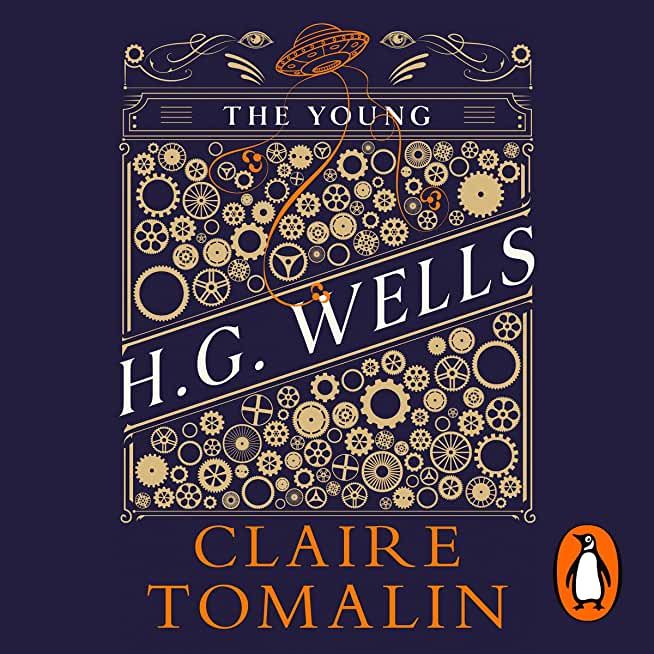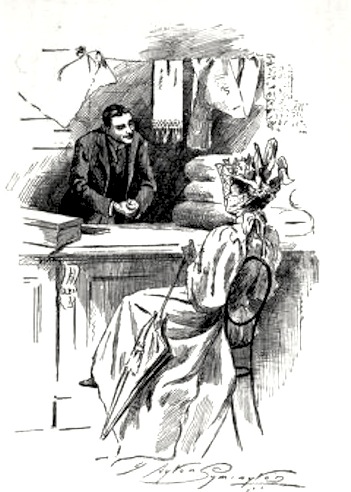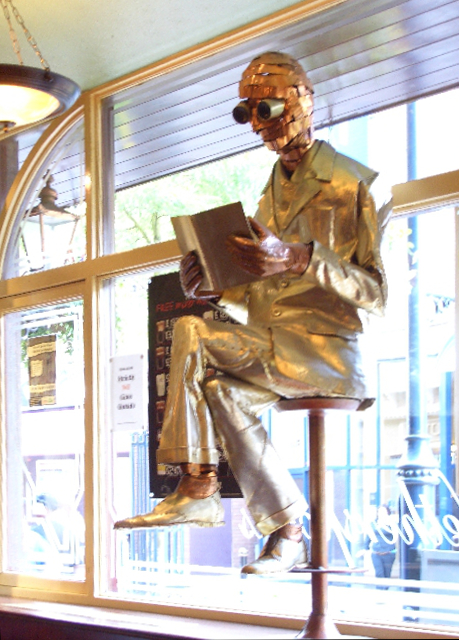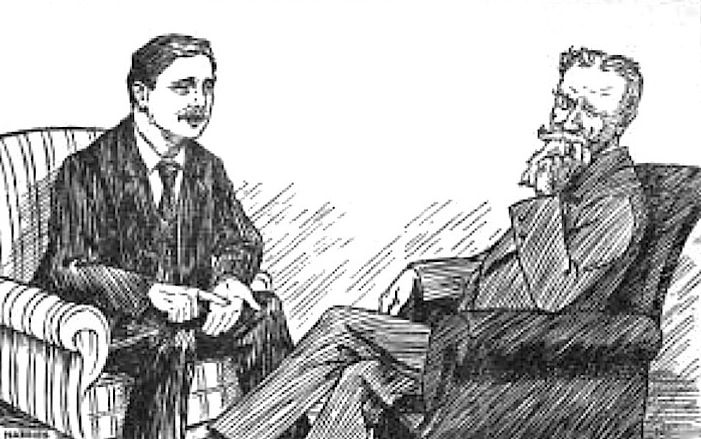
Claire Tomalin has tackled some of the most demanding literary subjects, writing, among others, extended biographies of Shelley, Pepys, Hardy and Dickens. Tomalin suggestively hints at the complexity of her subjects in the form of her subtitles: Hardy, for example, is ‘The Time-Torn Man’, Pepys is a strong individual, ‘The Unequalled Self’, and Shelley is placed in ‘His World’.
Tomalin is equally provocative in the title of her new biography, The Young H. G. Wells: Changing the World (2021). Confining herself to Wells’s early development and success, she traces in detail the author’s struggles and how he eventually became one of the most important writers of his time, exerting a huge influence on late Victorian understandings of politics, science, and sexual ethics. The scope of his activities is in itself surprising for modern readers, many of whom know only of Wells as one of the fathers of science-fiction. But Tomalin shows that his interests were much wider than his reputation would suggest, and traces in detail his engagement with social problems and his endless speculation on class and the question of ‘love’.
The personality Tomalin presents was certainly unconventional, with radical attitudes. An advocate of evolution who was taught by T. H. Huxley (33), he disparaged religion as childish and denied the idea of immortality. He always believed in some version of social equality, being a member of the Fabian Society and later a supporter of the Labour Party, with several of his social commentaries acting as an inspiration for Keir Hardy and the nascent movement. He was, most of all, a believer in sexual freedom for men and women, had no interest in what he saw as the pointless connection between morality and sexuality, and spent his whole life engaged in ‘an enterprising promiscuity’ (57) with multiple partners (who, somewhat mysteriously, given his weedy frame and falsetto voice, found him irresistible).

Mr Hoopdriver in Wheels, behind the counter of a draper's shop.
[Click on this and the following iamages for motr information.]
Nevertheless, as Tomalin demonstrates, Wells’s beliefs did not always sit neatly within a life that was otherwise an arduous struggle for fame and success as an author. In her opening chapters, she presents a vividly realized account of Wells’s origins as the son of an unsuccessful shopkeeper; poverty-stricken and forced to take a job in a draper’s shop, the frustrated writer manqué is shown grimly at work, hating every minute of the tedious detail, taking far too long to do routine tasks and being defiantly bad at all he was asked to do:
At the shop he was never out of trouble. In his second year, dressed now in a black morning-coat and tails and promoted to serving customers, he did worse still. He failed to find what was wanted, and, if he did sell something, he was quite unable to wrap it up neatly. He knew that he must somehow contrive to get out, but could not think of any way of escaping. [19]
The exit, as it turned out, was to gain an education and work hard writing short stories and piecemeal articles and columns for a range of magazines. The struggle, however, was monumental: Wells first of all failed his degree, and in order to live was thereafter tied to his desk writing as many as 4,000 words a day, and with several texts being written concurrently. These facts are well known, and Tomalin excels at showing how Wells’s ambitions were hard-won as he struggled, in addition to everything else, with his physical limitations.

The figure of the Invisible Man reading a book in a pub
in Woking, where Wells lived in the early 1890s.
What surprised me, in particular, was the intensity of the author’s illnesses: as a young man he was perpetually unwell, underfed and puny, and troubled by respiratory problems and chest infections that looked much like tuberculosis. Whatever successes he had, such as gaining a job as a teacher in a school in north Wales, were immediately and repeatedly knocked back; no matter how much he tried, it was a matter, as Tomalin remarks in her chapter heads, of ‘Blood’ and ‘More Blood’, kidney infections, piles, bronchitis. At the same time, he was fortunate in gaining the assistance of friendly doctors and especially in finding support in the form of his mother, who became the housekeeper at Uppark House, Sussex, and gave him shelter and a place to recover at a time when he was otherwise homeless; it was here, also, that he advanced his education by reading the books in its library.
Otherwise deprived of practically everything, he always seemed to find a way to fulfil his ambitions. Indeed, Tomalin imagines Wells as a typically Victorian ‘self-made man’, a meritocrat who rises from the uneducated working classes to become both an outstanding writer and a social guru. The mainstay is of course his brilliant writings of the 90s and early 1900s, and the biographer offers many detailed and insightful comments on The Time-Machine, The War of the Worlds, The Island of Dr Moreau, The Invisible Man and The First Men in the Moon. These works became the foundation stone for modern science fiction, but all of them are informed with social philosophising; Tomalin views them as one aspect of Wells’s polemicism and links them to later books, such as A Modern Utopia, in which the author’s desire for reform is explicitly presented.

Wells with George Bernard Shaw.
By the 1920s, we are told, Wells was regarded as a sort of national institution, a literary clairvoyant who seemed able to predict the future. He was also a key member of writing fraternities, enjoying over long years relationships with Henry James, Arnold Bennett, G. B. Shaw, Joseph Conrad and George Gissing; he similarly engaged in associations with politicians, and (very surprisingly) was a friend of Churchill’s. The trajectory of his ascent, from unskilled shop assistant to influential writer and thinker, was indeed remarkable, and Tomalin is probably right in focusing on his early years as the crucible of his astonishing achievements.
However, Tomalin is equally careful to explain and sometimes just to imply the many inconsistencies in his heroic struggle; such ambition was commendable, but it came at a cost, and the brilliant Wells is measured against a Wells who was often callous and always self-serving. We are told, for example, that he built many amiable relationships with other writers, but almost always slandered them once they were dead, displaying an unusual degree of spitefulness; he was similarly ruthless and two-faced in his dealings with publishers, claiming always to be short of money when he wasn’t, and regularly dishonouring agreements he had made in order to project his work and increase his profits; he argued with many, and he retorted with vindictiveness to those who offended him. This behaviour was far from the utopian ideals of Fabianism and Socialism, and, like many such advocates of a better life, Wells seems to have been blind to the fact that on occasions at least he was anything but an exemplar of kind and civilized living.
Worst of all, by far, is his sexual behaviour. Tomalin is characteristically understated in her judgments, noting that at the very least he was a ‘bad husband and an unreliable lover’ (207). Insisting he needed to be free to pursue a life of polyamory, he gained that freedom with his second wife’s agreement; there was, at least, no deception. But, as the biographer repeatedly notes, he was incapable of loyalty and treated all of his woman as a source of pleasure, even if he hoped they too would be liberated by sex as a purely physical act. Fidelity and commitment did not exist in his mind and he justified his behaviour as an expression of his belief in an ‘advanced’ refiguring of relationships. He seems never to have contemplated the intense hurt he caused his wives – leaving his first wife because she did not enjoy sex with him and removing himself from his second wife Jane for some sexual adventures after she had just given birth; and he treated his casual encounters with the same emotionlessness. The crassness of his behaviour is drawn into sharp focus in the sections dealing with his time with Amber Reeves, when he was 38 and she was a twenty-something undergraduate at Cambridge. Amber seemingly set out to seduce Wells and bear him a child, but the situation is better read as a matter of abuse, with a huge power asymmetry at work. Tomalin seems weary as she recounts the dynamics of the relationship:
What happened between Wells and Amber Reeves can be described in various ways, depending on where your sympathies lie. One version would be of a headstrong, star-struck, selfish girl pursuing a famous writer, demanding to have a child by him, losing her nerve, behaving badly all round and causing a great deal of trouble. An alternative version would be of a self-indulgent and lecherous middle-aged married man allowing himself to embark on a love-affair with the vulnerable daughter of family friends, getting her pregnant … and finally being forced by pressure from the parents and friends to let the girl go. [169–270]

A Martian invasion: Warwick Goble's illustration
for War of the Worlds.
Readers are left free to decide, but Wells hardly emerges as a sympathetic character. Indeed, The Young H. G. Wells is an honest and open-ended account of a maverick who veered between some admirable qualities and epic achievements, and some downright nastiness. We all know that great artists do not need to be great people and there is a marked disparity between what the author said, and what he did. What remains, of course, is his extraordinary body of writing, an imaginative universe in which it is possible to travel through time, became invisible, fight a Martian invasion, journey weightlessly to a Moon occupied by a race of insects or discover a valley where everyone is blind. These narratives are Wells’s true achievement. Tomalin gives us a compelling account of the man who produced this fiction, and in so doing makes us think that the work is so much greater than the deeply flawed individual who quarried those worlds from his highly original mind and made them available, dream-like, to generations of readers.
Bibliography
[Book under review] Tomalin, Claire. The Young H. G. Wells: Changing the World. London: Viking, 2021. Hardback, 256 pp. Illustrated with photographs in black and white and black and white illustrations by David Gentleman. ISBN 978-0-241-23997-1. £20.
Created 9 January 2022